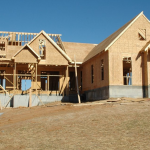Melbourne is a city built on diversity. Its streets, suburbs, and people all reflect a mix of heritage, creativity, and progress. This strong identity influences how buildings look and feel from the inside. Interior architecture in Melbourne is not just about design. It reflects the way people live, think, and connect with their surroundings.
In Melbourne, culture shapes space. Locals value function, community, and lifestyle. These values show in how homes, offices, and public spaces are planned. Interior architects respond by creating designs that support how people actually use spaces—day to day, season to season—often incorporating affordable furniture to make stylish and functional living more accessible.

Cultural Diversity Influences Design
Melbourne is home to people from many countries, each bringing their own preferences in space use, color, and layout. These cultural layers influence how interiors are shaped, with many homes blending features from different traditions. Open-plan living areas are common, supporting shared family time that many cultures value. Kitchens often become central to the home, reflecting food-focused lifestyles. Designers in Melbourne use cultural insights to create spaces that feel both familiar and fresh. Rather than applying a one-size-fits-all approach, they tailor each project to the unique needs and habits of the people who will use the space.
Climate Shapes Materials and Layout
Melbourne’s fast-changing weather—hot summers, cool winters, and sudden rain—directly affects how interiors are designed. Homes must allow good airflow during summer while maintaining strong insulation for winter. Materials such as timber, brick, and natural stone are frequently used for their thermal properties. Large windows and skylights bring in natural light but require careful shading. Interior architects prioritize comfort and energy efficiency by selecting layouts and materials that respond to local weather conditions instead of just following trends.
The Coffee and Art Scene Impacts Interiors
Melbourne’s vibrant café and art culture has significantly shaped both commercial and residential interiors. People now expect spaces to be relaxed, stylish, and creative. Cafés often use raw materials like concrete, timber, and metal, setting a tone that influences home design. Many residences now feature cozy nooks or reading corners inspired by café layouts. Art plays a central role in interiors, not just as decoration but as an expression of identity. Designers frequently include local artworks, murals, or handmade pieces, adding personality and connecting spaces to Melbourne’s broader creative scene.
Urban Living Affects Space Planning
With many residents living in apartments or compact homes, space planning is essential in Melbourne. Designers use sliding doors, built-in storage, and multi-functional furniture to make interiors more efficient. Light colors and mirrors help create a sense of spaciousness. Outdoor areas such as balconies and courtyards are often integrated into the flow of the interior. Interior architects aim to make the most of every square meter, ensuring small spaces remain functional and uncluttered.
Heritage Buildings Guide Interior Updates
Melbourne has a wealth of heritage-listed buildings that must retain their historic character while accommodating modern lifestyles. Designers carefully preserve features like cornices, arches, and ceiling roses. Modern updates introduce light, technology, and comfort without erasing historical charm. New materials are chosen to complement older ones, maintaining a cohesive look. This approach balances the need to respect the past with the demands of contemporary living, a key aspect of interior architecture in Melbourne.
Sustainable Values Drive Material Choices
Sustainability is a growing concern among Melbourne residents, influencing how interiors are designed and furnished. Recycled materials and second-hand furniture are widely used. Designers prioritize natural light, ventilation, and low-impact, eco-friendly materials. Locally sourced products are often chosen to reduce transport-related emissions. Interior architects plan for durability and adaptability, creating spaces that are built to last and evolve with their occupants over time.
Community and Connection Shape Public Interiors
Public spaces such as libraries, galleries, and community centers play a vital role in Melbourne’s cultural life. Their interiors are designed to support shared use and flexibility. Open layouts accommodate events, workshops, and daily gatherings, while soft lighting and clear signage make these spaces feel welcoming. Furniture is often movable and multi-purpose, allowing spaces to be easily adapted for various needs. These design choices reflect a focus on community, inclusivity, and meaningful connection.
Public interiors aim to bring people together. They offer comfort without being too formal, and they reflect the values of access and inclusion.
Melbourne’s interior architecture shows what matters to its people. Culture, climate, and community guide every design choice. Whether it’s a small home or a public building, interiors in Melbourne reflect real needs and local values.
Designers in the city work with what is around them: history, weather, habits, and people. This makes Melbourne’s interiors unique, practical, and deeply connected to place.
…













Recent Comments